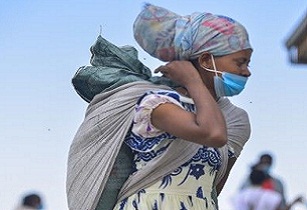The government of Belgium has contributed US$500,000 through SFERA, to FAO’s project which aims to benefit as many as 11,000 households (55,000 people) in Ethiopia’s Tigray region
FAO’ project will provide beneficiaries with assorted agricultural inputs (short-cycle/drought-tolerant seeds including onion, teff and tomato) and training sessions on good agronomic practices. The project will support coordination efforts at the regional level to improve the collection and dissemination of information on agricultural interventions.
About 5.5 million people in Tigray and neighbouring Afar and Amhara are suffering from acute food insecurity, as reported in June 2021.
The ongoing conflict in Tigray has led to a humanitarian crisis, characterised by alarmingly high levels of food insecurity, gender-based violence, widespread displacement, limited access to services, and the destruction of the local economy.
The conflict commenced at the peak of the main agricultural season (Meher) harvest period, when many households had not yet harvested their crops. It is estimated that more than 90% of the crop harvest was lost (looted, burned and/or destroyed), while 15% of the region’s 17 million livestock were reported looted or slaughtered. Since the majority of Tigrayans depend on subsistence agriculture (80% rely on agriculture as their main source of food and livelihood), the loss of their harvest and production inputs has severely impacted their food security and nutrition.
The 5.5 million people in Tigray and neighbouring Afar and Amhara, who are in high acute food insecurity, represent nearly 61% of the analysed population. A total of 3,53,000 people are in catastrophe level of acute food insecurity (Integrated Food Security Phase Classification [IPC] Phase 5) in Tigray alone, the highest numbers recorded in the last decade. There are approximately 2.1 million people in Phase 4 (Emergency), and 3.1 million in Phase 3 (Crisis), who would avoid falling into IPC Phase 5 and destitution, if supported with agricultural inputs.
Nearly 93% of the population in northern Ethiopia require emergency assistance (more than 5.5 million people). After failing to harvest in 2020, the consequences of missing the 2021 season may be dire, as most households depend on their own production for food and income. If support is not provided immediately, the next harvest will be in 18 months. This scenario has far-reaching food security and nutrition consequences.
Prior to the conflict, the food system (production, transportation, processing, packaging, storage, retail, consumption, loss and waste) fed and supported the livelihoods of a vast majority of Tigray’s population. Even though households in Tigray were repeatedly exposed to multiple shocks, such as drought, desert locust infestations and the recent coronavirus disease 2019 (COVID-19) pandemic, most of them were able to cope, as demonstrated by the results of various food security assessments.
The project will be implemented in collaboration with a wide range of stakeholders, including government, United Nations agencies, non-governmental organisations and the private sector.





